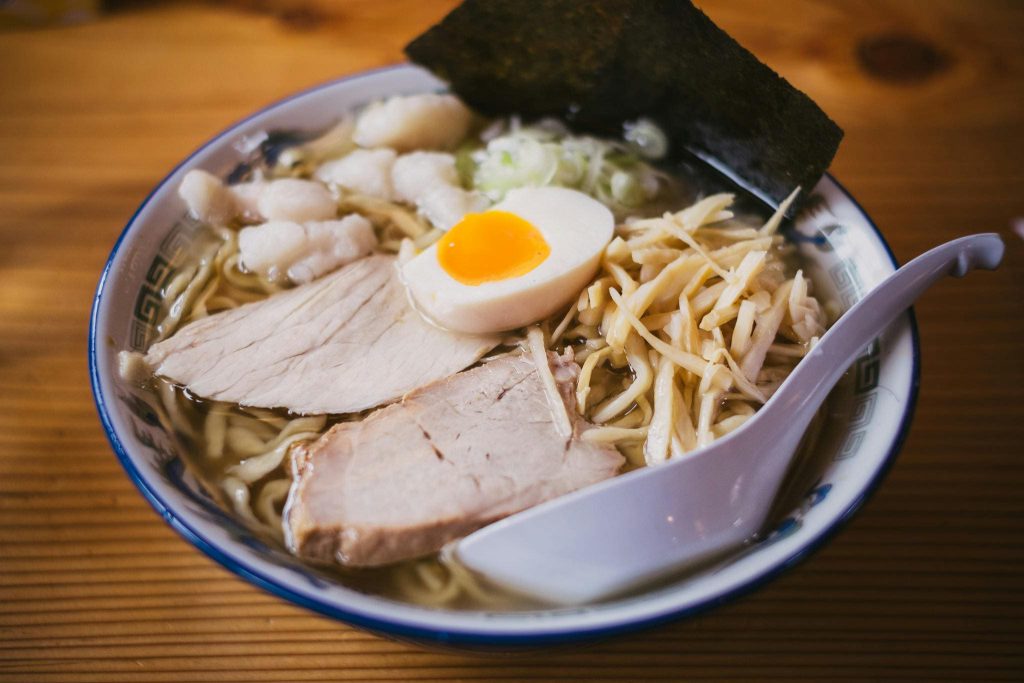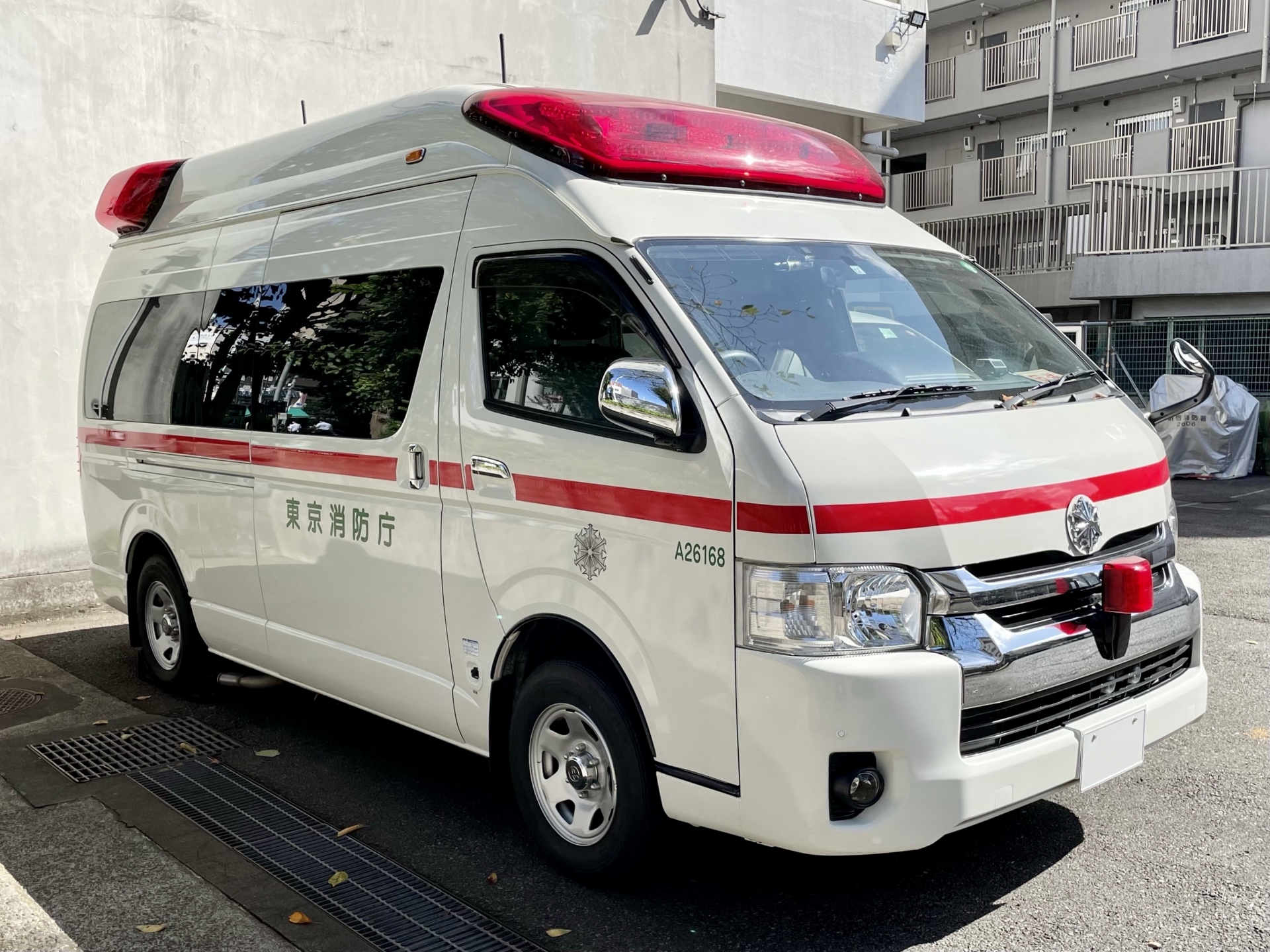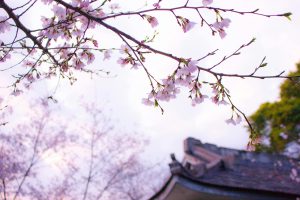Ramen is one of Japan’s most beloved and iconic comfort foods. Steaming bowls of savory broth, chewy noodles, and mouthwatering toppings come together to create an endless variety of flavors and regional styles. In fact, ramen is so diverse that you could spend a lifetime exploring all its different forms across Japan.
In this guide, we’ll dive into the most popular types of ramen you absolutely need to try. Whether you’re a first-timer or a seasoned noodle enthusiast, understanding these styles will make your ramen journey even more delicious!
1. Shoyu Ramen (Soy Sauce Ramen)
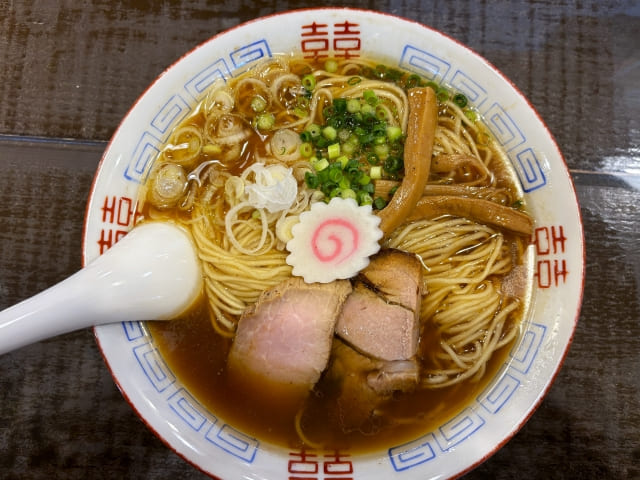
What is Shoyu Ramen?
Shoyu ramen is perhaps the most classic and widely enjoyed type of ramen in Japan. The broth is based on soy sauce(shoyu), giving it a clear, brown color and a savory, slightly tangy flavor.
Typical Ingredients
- Chicken, vegetable, or pork-based broth
- Curly, medium-thick noodles
- Toppings: Chashu (braised pork), bamboo shoots (menma), green onions, nori (seaweed), soft-boiled egg
Famous Regions
- Tokyo (the birthplace of classic shoyu ramen)
- Kitakata (known for its light, refreshing shoyu ramen)
Flavor Profile
- Salty, aromatic, slightly sweet
2. Shio Ramen (Salt Ramen)

What is Shio Ramen?
Shio ramen is the oldest form of ramen, characterized by a clear, light, and salty broth. Despite its simplicity, a good shio ramen has a delicate depth of flavor.
Typical Ingredients
- Broth based on chicken, seafood, or pork
- Thin, straight noodles
- Toppings: Kamaboko (fish cake), pickled plum (umeboshi), green onions, nori
Famous Regions
- Hakodate (Hokkaido)
Flavor Profile
- Light, clean, salty
3. Miso Ramen
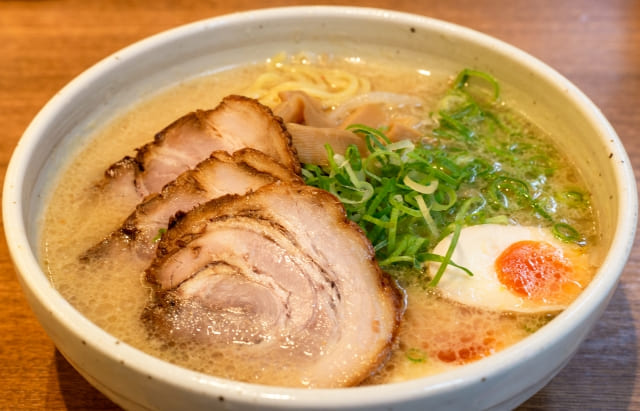
What is Miso Ramen?
Miso ramen features a broth flavored with fermented soybean paste (miso), creating a hearty, rich, and slightly sweet soup.
Typical Ingredients
- Rich pork and chicken broth blended with red or white miso
- Thick, curly noodles
- Toppings: Corn, butter, bean sprouts, cabbage, ground pork
Famous Regions
- Sapporo (Hokkaido)
Flavor Profile
- Savory, slightly sweet, creamy
4. Tonkotsu Ramen (Pork Bone Ramen)
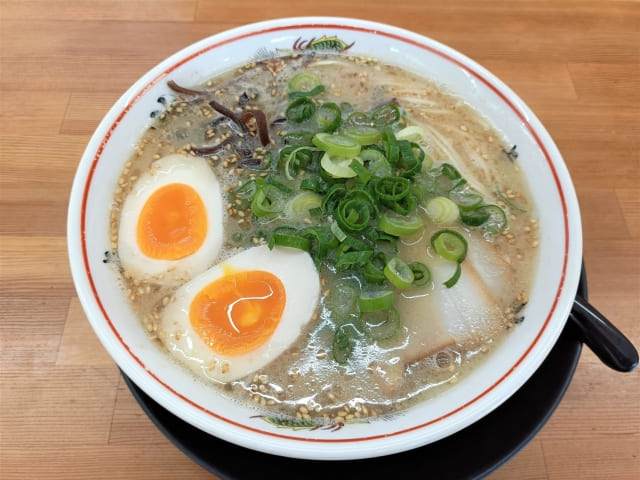
What is Tonkotsu Ramen?
Tonkotsu ramen is made by boiling pork bones for hours until the broth becomes rich, creamy, and full of umami flavor.
Typical Ingredients
- Broth made entirely from pork bones
- Thin, straight noodles
- Toppings: Chashu, kikurage mushrooms, green onions, pickled ginger
Famous Regions
- Hakata (Fukuoka)
Flavor Profile
- Thick, rich, deeply savory
5. Tsukemen (Dipping Ramen)
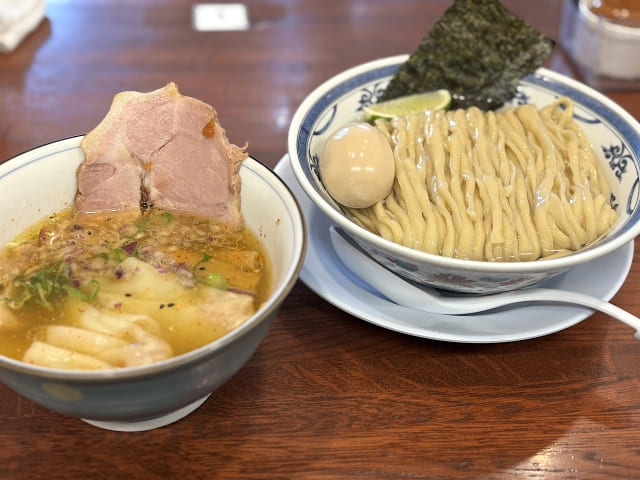
What is Tsukemen?
Tsukemen means “dipping noodles,” where cold or room-temperature noodles are served separately from a rich, thick broth for dipping.
Typical Ingredients
- Thick noodles
- Concentrated dipping sauce (usually pork or fish-based)
- Toppings: Chashu, menma, egg, lime or lemon for added flavor
Famous Regions
- Tokyo (Ikebukuro and Nakano)
Flavor Profile
- Rich, intense, customizable
6. Chashumen (Chashu Ramen)
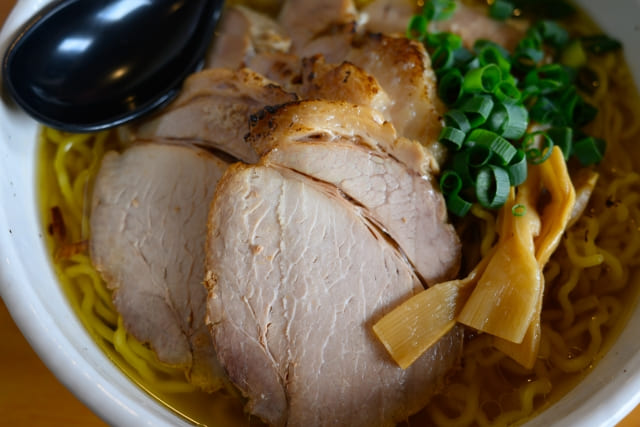
What is Chashumen?
Chashumen is a ramen dish topped generously with multiple slices of chashu (braised pork belly or shoulder), often covering the entire surface of the bowl.
Typical Ingredients
- Any type of broth (commonly shoyu or tonkotsu)
- Medium-thick or thin noodles
- Toppings: An abundant amount of chashu, green onions, bamboo shoots, sometimes seasoned egg
Famous Regions
- Nationwide (especially popular in Tokyo and Yokohama)
Flavor Profile
- Rich and savory with tender, juicy pork flavor dominating the bowl
7. Iekei Ramen (House-Style Ramen)

What is Iekei Ramen?
Iekei ramen originated in Yokohama and is a combination of tonkotsu and shoyu broths. It features thick, straight noodles and toppings like spinach and nori.
Typical Ingredients
- Pork bone and soy sauce blended broth
- Thick, chewy noodles
- Toppings: Chashu, spinach, nori, soft-boiled egg
Famous Regions
- Yokohama
Flavor Profile
- Rich, salty, hearty
8. Hakata Ramen
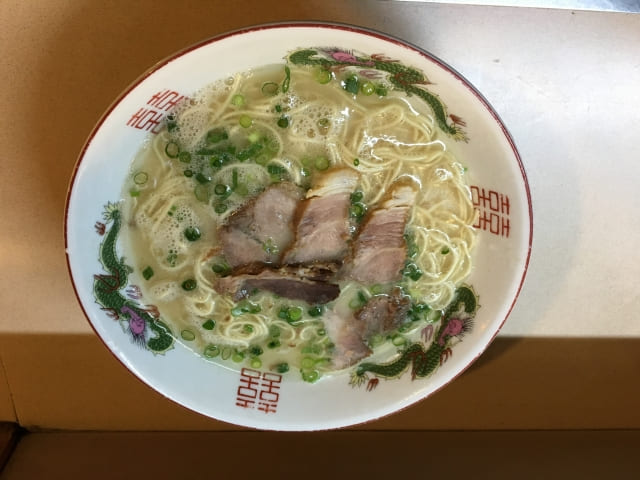
What is Hakata Ramen?
A specific type of tonkotsu ramen that features ultra-thin noodles and a very strong, creamy pork bone broth.
Typical Ingredients
- Pure pork bone broth
- Very thin, straight noodles
- Toppings: Green onions, pickled ginger, sesame seeds
Famous Regions
- Fukuoka (Hakata district)
Flavor Profile
- Extremely rich, meaty, and creamy
9. Sapporo Ramen

What is Sapporo Ramen?
Sapporo ramen is typically miso-based, hearty, and designed to withstand Hokkaido’s cold winters.
Typical Ingredients
- Miso-based broth
- Thick, curly noodles
- Toppings: Corn, butter, bean sprouts, ground pork
Famous Regions
- Sapporo (Hokkaido)
Flavor Profile
- Rich, slightly sweet, deeply savory
10. Kitakata Ramen
What is Kitakata Ramen?
Kitakata ramen is famous for its light soy sauce broth and thick, flat noodles.
Typical Ingredients
- Shoyu broth (light)
- Thick, flat, chewy noodles
- Toppings: Chashu, green onions, bamboo shoots
Famous Regions
- Kitakata (Fukushima Prefecture)
Flavor Profile
- Refreshing, aromatic, lighter than other types
Regional Ramen Variations Worth Exploring
Japan’s regions offer even more localized ramen types:
- Onomichi Ramen (Hiroshima): Soy sauce broth with pork back fat.
- Kurume Ramen (Kyushu): Original form of tonkotsu ramen, richer and thicker than Hakata.
- Wakayama Ramen: Shoyu-tonkotsu hybrid popular in Kansai.
- Asahikawa Ramen (Hokkaido): Shoyu-based with a layer of pork fat to keep it hot.
How to Customize Your Ramen
Many ramen shops allow you to customize your bowl:
- Noodle firmness: From “very soft” to “very hard”
- Broth richness: Light, normal, or extra rich
- Oil level: Low, normal, or extra oily
- Toppings: Add extra chashu, egg, garlic, or spicy sauce
Tip: Don’t be afraid to experiment to find your perfect combination!
Ramen Etiquette Tips
- Slurp your noodles! It enhances the flavor and shows appreciation.
- Eat quickly: Ramen is meant to be enjoyed while hot.
- Return your bowls: Place dishes neatly when you’re finished.
FAQ
Is ramen originally from Japan?
Ramen has Chinese origins but evolved uniquely in Japan to become a national cultural phenomenon.
Are ramen noodles made from rice?
No. Traditional ramen noodles are made from wheat flour, water, salt, and an alkaline mineral water called “kansui.”
Is ramen always pork-based?
No! Shio and shoyu ramen often use chicken, seafood, or vegetable bases.
Can I find vegetarian ramen?
Yes, especially in major cities. Look for shops specializing in vegetable-based broths.
Conclusion
Ramen is far more than just a quick meal—it’s an art form, a comfort food, and a cultural journey. From the light and elegant shio ramen of Hakodate to the rich and hearty tonkotsu of Hakata, every style tells a different story of Japan’s culinary soul.
Next time you step into a ramen shop, remember the flavors, history, and love behind every bowl. Better yet, plan a ramen tour across Japan and savor them all!
Happy slurping!












